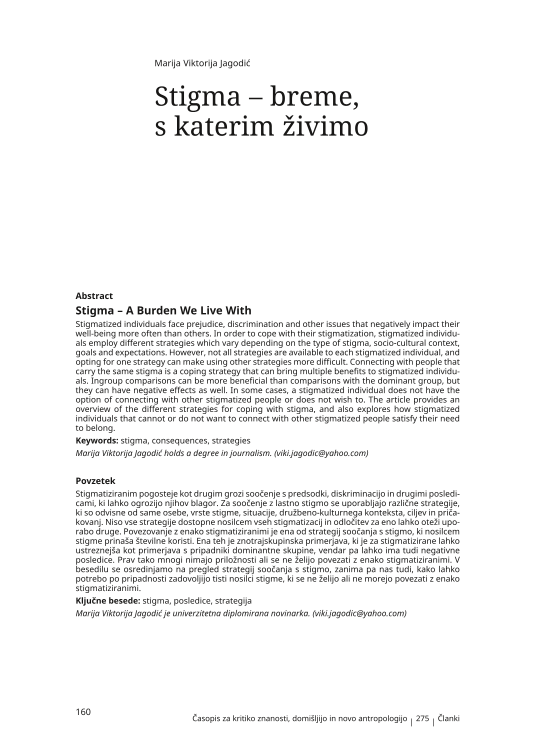Stigmatized individuals face prejudice, discrimination and other issues that negatively impact their well-being more often than others. In order to cope with their stigmatization, stigmatized individuals employ different strategies which vary depending on the type of stigma, socio-cultural context, goals and expectations. However, not all strategies are available to each stigmatized individual, and opting for one strategy can make using other strategies more difficult. Connecting with people that carry the same stigma is a coping strategy that can bring multiple benefits to stigmatized individuals. Ingroup comparisons can be more beneficial than comparisons with the dominant group, but they can have negative effects as well. In some cases, a stigmatized individual does not have the option of connecting with other stigmatized people or does not wish to. The article provides an overview of the different strategies for coping with stigma, and also explores how stigmatized individuals that cannot or do not want to connect with other stigmatized people satisfy their need to belong.




